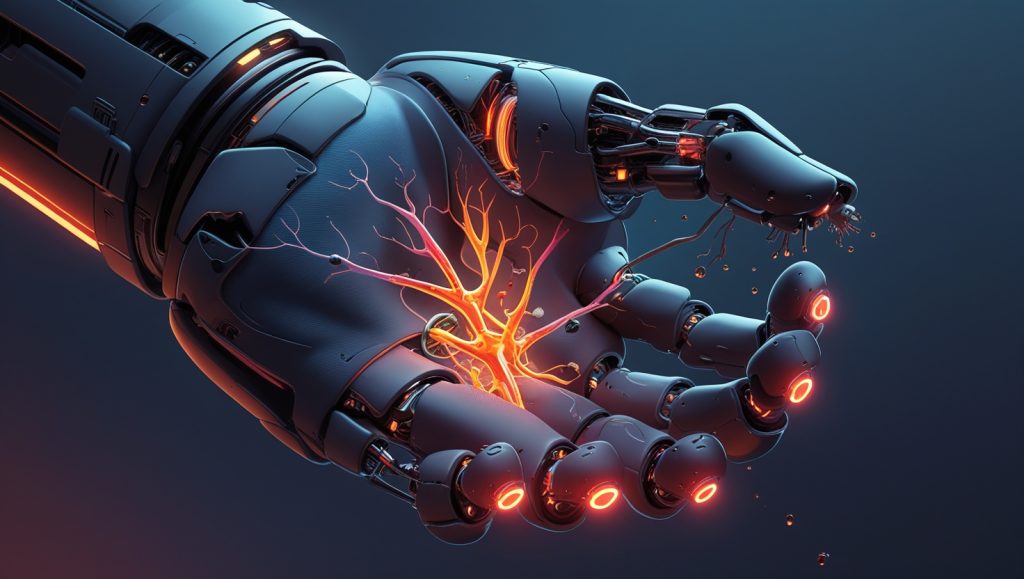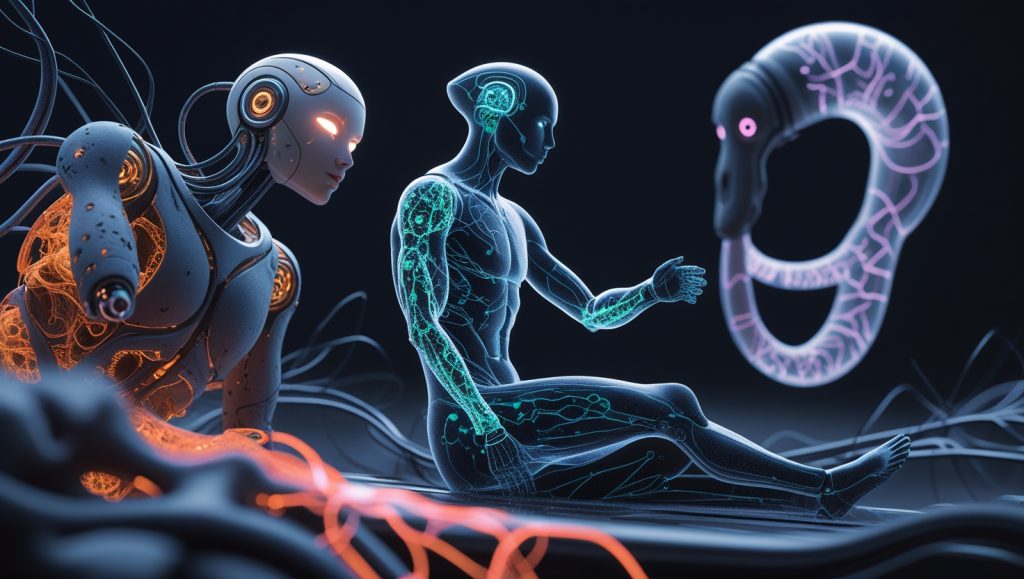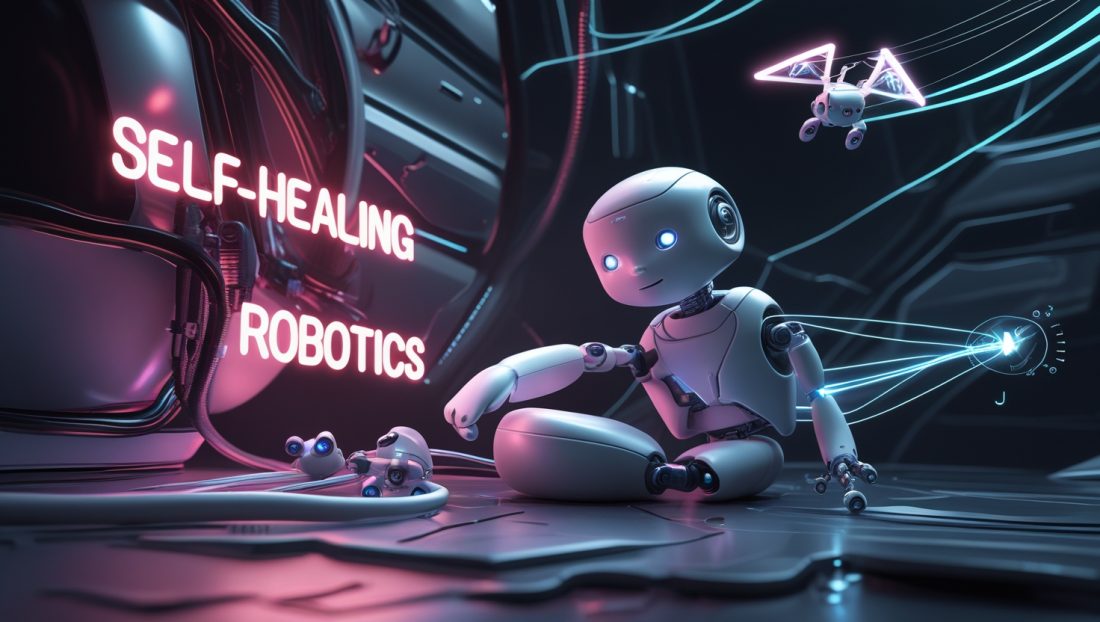The Rise of Self-Healing Materials: Merging Biology and Engineering
What Makes Self-Healing Materials Unique?
Self-healing materials are engineered to detect and repair damage autonomously, much like human skin or plant tissues. Unlike conventional materials, which degrade irreversibly, these systems use innovative mechanisms such as microvascular networks, dynamic covalent bonds, and shape-memory polymers to restore functionality with self-healing robotics. For instance, researchers at the University of Illinois developed a polymer that can heal a 3-centimeter tear in under 24 hours using a combination of heat and embedded healing agents—a breakthrough in self-healing robotics durability.
In soft robotics—a discipline focused on creating flexible, lifelike machines—these materials are transformative. A 2023 report by the International Federation of Robotics highlighted that 65% of soft robotic failures stem from material degradation, making self-healing capabilities a game-changer for longevity and reliability. Curious about soft robotics breakthroughs? Explore Soft Robotics Artificial Muscles Breakthrough for more insights into this evolving field.
Why Are Self-Healing Materials Critical for Soft Robotics?
Soft robots, with their pliable structures, excel in tasks requiring delicacy and adaptability, such as handling fragile objects or navigating uneven terrain. However, their flexibility makes them vulnerable to punctures, cracks, and wear. Self-healing materials address these vulnerabilities by extending operational lifespans, reducing maintenance costs, and enabling deployment in environments where human intervention is impractical—hallmarks of self-healing robotics.
Consider the case of OceanOneK, a humanoid diving robot developed by Stanford University. During a 2022 mission to explore a sunken Roman shipwreck, its soft silicone hands sustained damage from sharp debris. Engineers integrated a self-healing polymer that sealed minor cuts within minutes, allowing the robot to complete the mission without retrieval. This example underscores how self-healing materials are not just convenient but essential for high-stakes applications in self-healing robotics. For more on underwater robotics, see Why Untethered Deep-Sea Robots Revolutionize Ocean.
The Science Behind Self-Healing: From Microcapsules to AI-Driven Repair

How Do Self-Healing Mechanisms Mimic Nature?
The most advanced self-healing systems draw inspiration from biological processes. For example, microvascular networks—tiny channels filled with healing agents—mimic human blood vessels. When damage occurs, these channels release epoxy or other agents to seal cracks in self-healing robotics systems. Researchers at MIT demonstrated this in 2021 by embedding a soft robotic gripper with a microvascular system; the gripper recovered 90% of its strength after healing a 5-mm tear—a testament to self-healing robotics potential.
Another breakthrough involves dynamic covalent bonds, which enable molecules to reorganize under stimuli like heat or light. A 2023 study in Advanced Materials showcased a polyurethane-based material that healed 98% of its original tensile strength after being sliced with a scalpel, simply by applying mild heat. Such innovations are paving the way for robots that can endure repetitive stress in industrial settings with self-healing robotics at the core. Learn more about robotics durability in Soft Humanoid Robots Home Safety.
Why Is Energy Efficiency a Hurdle for Self-Healing Systems?
While many materials require external energy (e.g., heat or UV light) to activate healing, recent advances aim to minimize this dependency in self-healing robotics. For instance, scientists at the Max Planck Institute developed a hydrogel that uses ambient moisture to trigger self-repair, making it ideal for underwater robotics—a leap forward in self-healing robotics efficiency. However, balancing energy efficiency with healing speed remains a challenge. For example, NASA’s Mars rovers rely on self-healing coatings that cure via solar energy, but the process can take hours—a limitation in time-sensitive scenarios. This hurdle highlights why self-healing robotics must evolve to meet real-world demands. For space robotics insights, visit Why Space Robotics Is the Next Gold Rush.
Real-World Applications: Where Self-Healing Materials Are Making Waves
Healthcare: Robots That Heal Like Living Tissue
In minimally invasive surgery, soft robots must navigate delicate tissues without causing trauma. However, accidental punctures or abrasions can compromise sterility. Enter self-healing elastomers:
- Cardiac Surgical Robots: At the University of Tokyo, a team designed a catheter with a self-healing polymer layer. During a 2023 trial, the device autonomously sealed a 2-mm tear caused by calcified heart tissue, preventing contamination and reducing procedure time by 20%—a win for self-healing robotics in healthcare.
- Prosthetics: Startups like FlexLife Labs are prototyping artificial limbs with self-healing skins that resist daily wear, enhancing comfort and durability for amputees through self-healing robotics advancements.
For more on robotics in medicine, check out Why Robot Surgeons Can’t Replace Humans Yet.
Space Exploration: Surviving the Final Frontier
The harsh conditions of space—extreme temperatures, radiation, and abrasive dust—demand materials that can withstand constant degradation. NASA’s Perseverance Rover employs a self-healing aerogel coating to protect its sensors from Martian dust storms, showcasing self-healing robotics in action. Meanwhile, the European Space Agency is testing shape-memory alloys for robotic arms on lunar missions, enabling components to regain their structure after micrometeoroid impacts—a critical feature of self-healing robotics for extraterrestrial use.
Manufacturing: Reducing Waste and Downtime
In automotive assembly lines, soft robotic grippers handle fragile components like glass panels. A 2022 collaboration between Kinetic Robotics and Toyota reduced production downtime by 35% by integrating self-healing silicones into grippers. These materials repaired minor abrasions during shifts, eliminating the need for frequent replacements—a practical application of self-healing robotics. For more on industrial robotics, see Why China’s Industrial Robot Dominance Is Reshaping Global Manufacturing.
Answering the “Why” Questions: What the Public Wants to Know

Why Are Self-Healing Materials More Sustainable?
Traditional robotics contribute to e-waste, with 50 million metric tons discarded globally in 2023 alone (Global E-Waste Monitor). Self-healing materials counter this by extending product lifecycles with self-healing robotics. For example, Siemens estimated that self-repairing industrial robots could reduce e-waste by 30% in manufacturing by 2030. Additionally, companies like EcoBotix are developing biodegradable soft robots with self-healing capabilities, merging sustainability with functionality in self-healing robotics. Dive deeper into sustainability with Why Robotics Is the Secret Weapon in the Fight Against Climate Change.
Why Do Existing Robots Fail Without Self-Healing Capabilities?
Conventional robots, especially rigid ones, are prone to mechanical fatigue and material degradation. Soft robots face even greater risks due to their pliable structures. A 2021 study in Science Robotics found that 40% of soft robotic failures in warehouse automation were caused by punctures or material fatigue—issues self-healing robotics can solve. Self-healing systems mitigate these risks by enabling continuous operation without human intervention—critical for applications like deep-sea exploration or disaster response. Explore more on robotics resilience in AI in Disaster Response.
Why Is Collaboration Between Academia and Industry Vital?
The complexity of self-healing materials demands interdisciplinary efforts in self-healing robotics. For instance, Harvard’s Wyss Institute partnered with Soft Robotics Inc. to commercialize a self-healing gripper for food packaging. Similarly, the EU-funded SHERO Project unites 13 universities and companies to develop fully autonomous self-repairing robots by 2025. These collaborations accelerate innovation by bridging theoretical research and practical engineering in self-healing robotics. For more on global robotics ecosystems, see Singapore Robotics Ecosystem Robonexus.
The Road Ahead: 3 Trends Shaping the Future

1. Biohybrid Systems: Merging Living Cells with Synthetic Materials
Researchers at the University of Cambridge are pioneering biohybrid robots that combine synthetic polymers with living fungi. These organisms secrete enzymes that repair material cracks, offering a sustainable alternative to chemical-based healing in self-healing robotics. Such systems could revolutionize agriculture, with robots that “grow” and repair themselves while monitoring crop health—a bold step for self-healing robotics innovation.
2. AI-Powered Predictive Healing
Machine learning algorithms are being trained to predict wear and tear before failure occurs in self-healing robotics. For example, Material Innovators Hub uses AI to analyze stress patterns in soft robotic skins, triggering preemptive healing in high-risk areas. This approach is being tested in wearable medical devices to prevent breaches during patient use, showcasing self-healing robotics’ future potential. Learn more about AI integration in Why Teaching Robots to Build Simulations of Themselves Is the Next Frontier in AI.
3. 4D Printing: Materials That Adapt and Heal
4D printing creates objects that evolve over time in response to stimuli. At ETH Zurich, scientists 4D-printed a soft robotic tentacle with embedded self-healing polymers. When exposed to heat, the tentacle not only repairs damage but also reshapes itself to navigate obstacles—a breakthrough for search-and-rescue missions powered by self-healing robotics. For more on 3D and 4D printing, check out Why Robotics in 3D Printing Unlocks Potential.
Challenges and Ethical Considerations
Scalability and Cost
While lab-scale successes abound, mass-producing self-healing materials remains expensive. For instance, microvascular networks require precision 3D printing, which can cost 10x more than traditional methods—a challenge for scaling self-healing robotics. Companies like HealTech Industries are tackling this by developing low-cost, scalable polymers for consumer robotics, pushing self-healing robotics toward broader adoption.
Ethical Implications: Autonomy and Control
As robots gain the ability to self-repair, questions arise about human oversight in self-healing robotics. Should a surgical robot be allowed to heal itself mid-operation without surgeon approval? Regulatory bodies like the FDA are drafting guidelines to balance autonomy with safety, ensuring human control in critical scenarios—a debate central to self-healing robotics’ future.
A Future Built on Resilience
Self-healing materials in soft robotics are more than a technological leap—they represent a paradigm shift in how we design machines. By solving durability, sustainability, and adaptability challenges, they unlock possibilities across healthcare, space exploration, and beyond with self-healing robotics. The path forward will require collaboration, ethical foresight, and continued innovation. As industries and researchers unite, the question isn’t whether self-healing robots will become mainstream, but how quickly we can integrate them into our lives.
